The amount of money you can make with affiliate marketing on Amazon can vary greatly depending on several factors such as the products you promote, the amount of traffic you drive to your affiliate links, and the commission rates offered by Amazon. Some affiliate marketers make a few hundred dollars a month, while others earn thousands or even tens of thousands of dollars. It ultimately depends on your dedication, marketing strategies, and the niche you choose.
What is Affiliate Marketing?
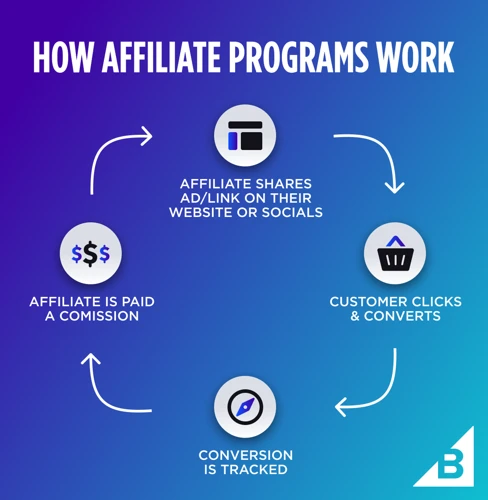
Affiliate marketing is a popular online business model where individuals or companies promote products or services on behalf of another company and earn a commission for every sale or lead generated through their efforts. In the case of Amazon, the world’s largest online marketplace, the Amazon Affiliate Program allows individuals to earn a commission by promoting products listed on the site. As an affiliate marketer, you will be provided with a unique affiliate link that tracks your referrals. When someone clicks on your affiliate link and makes a purchase, you will earn a percentage of the sale. The great thing about affiliate marketing is that you don’t need to create your own products or handle customer support. Your main focus is on driving traffic to your affiliate links and convincing people to make a purchase. This can be done through various marketing channels such as social media, email marketing, or blogging. Affiliate marketing offers a win-win situation for both the affiliate marketer and the company they are promoting. The affiliate marketer can earn a passive income while the company can increase their sales and reach a wider audience. So if you’re looking for a flexible and profitable online business opportunity, affiliate marketing on Amazon is definitely worth considering.
Advantages of Affiliate Marketing on Amazon
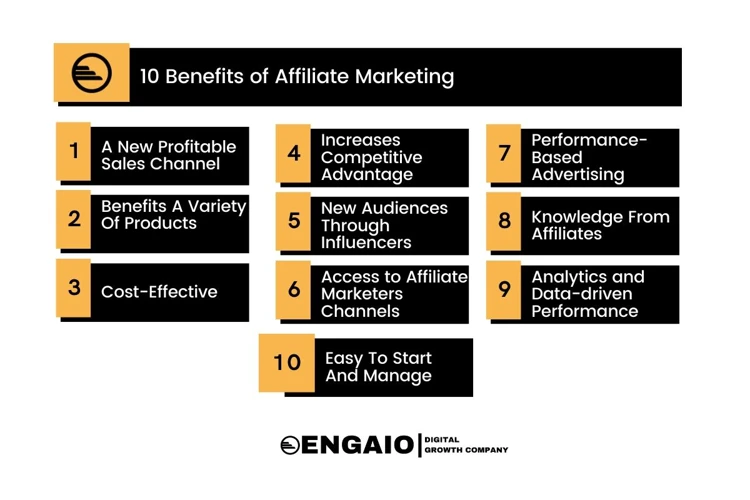
There are several advantages to doing affiliate marketing on Amazon:
1. Vast Product Selection: Amazon offers a wide range of products in almost every niche imaginable. This means that as an affiliate marketer, you have the opportunity to promote products that align with your target audience’s interests and preferences. Whether you’re passionate about fitness, fashion, technology, or home decor, you can find products to promote on Amazon.
2. Trust and Credibility: Amazon is a well-established and trusted online marketplace. When you promote products from Amazon, you benefit from the trust and credibility that the platform has built over the years. This makes it easier to convince your audience to make a purchase through your affiliate links, as they feel confident in the reliability and reputation of Amazon.
3. High Conversion Rates: Amazon has a highly optimized and user-friendly website, which leads to high conversion rates. When someone clicks on your affiliate link and lands on Amazon, they are more likely to make a purchase due to the seamless shopping experience and the convenience of features such as one-click ordering and fast shipping options.
4. Competitive Commission Structure: Amazon offers competitive commission rates for affiliate marketers. The commission rates vary depending on the product category, but they can range from 1% to 10% or even higher. This means that you have the potential to earn a significant income through your affiliate marketing efforts on Amazon.
5. Cross-Selling Opportunities: One of the unique advantages of affiliate marketing on Amazon is the ability to earn commissions on not only the products you promote but also on any other products that the customer purchases during their visit. Amazon has a robust cross-selling system that recommends related products to customers, increasing the chances of multiple purchases and higher commissions for you.
Affiliate marketing on Amazon provides a lucrative opportunity to earn passive income by promoting products from a trusted and well-known platform. Whether you already have a niche website or are just starting out, Amazon’s vast product selection, high conversion rates, and competitive commission structure make it an ideal choice for affiliate marketers. So, why not take advantage of the advantages that Amazon offers and start your affiliate marketing journey on the platform today?
Getting Started with Amazon Affiliate Program
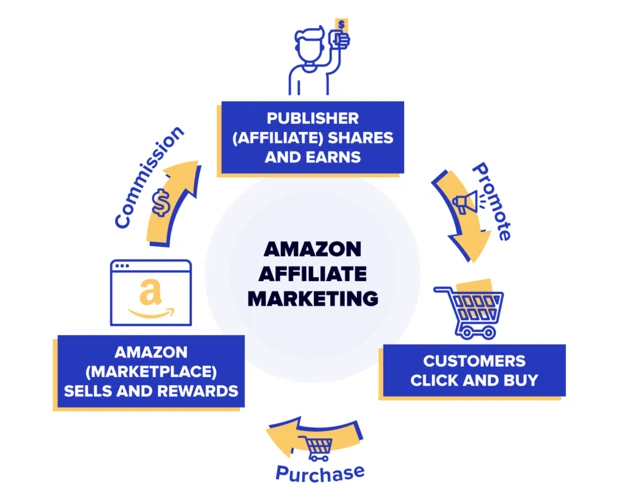
To get started with the Amazon Affiliate Program, follow these steps:
1. Sign up: Visit the Amazon Associates website and sign up for an account. Fill in your personal information and provide details about your website or blog (if you have one).
2. Choose your payment method: Select your preferred method of payment. Amazon offers several options, including direct deposit, Amazon gift cards, and checks.
3. Set up your profile: Once your account is approved, you can set up your profile. This includes providing additional information about your website or blog, as well as selecting your preferred affiliate categories.
4. Generate affiliate links: To promote products on Amazon, you’ll need to generate affiliate links. You can do this by using the SiteStripe toolbar, which appears at the top of your Amazon Associates homepage when you’re logged in. With SiteStripe, you can easily create text links, image links, or even add products to your Amazon store.
5. Place affiliate links on your website or blog: Once you have your affiliate links, you can start placing them strategically on your website or blog. Consider incorporating them into relevant product reviews, comparison articles, or even within your website’s sidebar.
6. Track your earnings: Amazon provides detailed reports and analytics to track your earnings. This allows you to monitor which products are performing well and which strategies are generating the most revenue.
Remember that the success of your affiliate marketing efforts on Amazon depends on the quality of your content and the relevancy of the products you promote. So, focus on creating valuable content that resonates with your target audience and encourages them to make a purchase through your affiliate links. By consistently providing value and optimizing your strategies, you can maximize your earnings as an Amazon affiliate.
Choosing the Right Products to Promote

When it comes to affiliate marketing on Amazon, choosing the right products to promote is crucial for your success. Here are some tips to help you select the best products to maximize your earnings:
1. Research popular and trending products: Start by researching popular and trending products within your niche. Look for products that have a high demand and are likely to attract a large audience.
2. Consider product relevance: It’s important to promote products that are relevant to your target audience. Think about what your audience would be interested in and what problems or needs they have that the product can solve.
3. Evaluate product quality: Before promoting a product, make sure it is of high quality. Read reviews, check customer feedback, and consider purchasing the product yourself to ensure its value.
4. Look for competitive commission rates: Different products offer different commission rates. Compare the commission rates of similar products and choose ones that offer competitive rates to maximize your earnings.
5. Check for affiliate program restrictions: Some products may have specific restrictions within their affiliate program. Make sure to review the terms and conditions before promoting a product to avoid any violations.
6. Consider seasonal and evergreen products: Seasonal products can be great for short-term promotions, while evergreen products have a consistent demand throughout the year. Consider a mix of both to maintain a steady stream of income.
7. Leverage Amazon’s tools: Amazon provides various tools and reports that can help you choose the right products. Utilize tools like Amazon Best Sellers, Product Advertising API, and Amazon Associates Reports to gather insights and make informed decisions.
Remember, the key is to choose products that align with your audience’s interests and needs. By selecting the right products to promote, you can increase your chances of attracting customers and earning higher commissions.
Creating a Niche Website or Blog
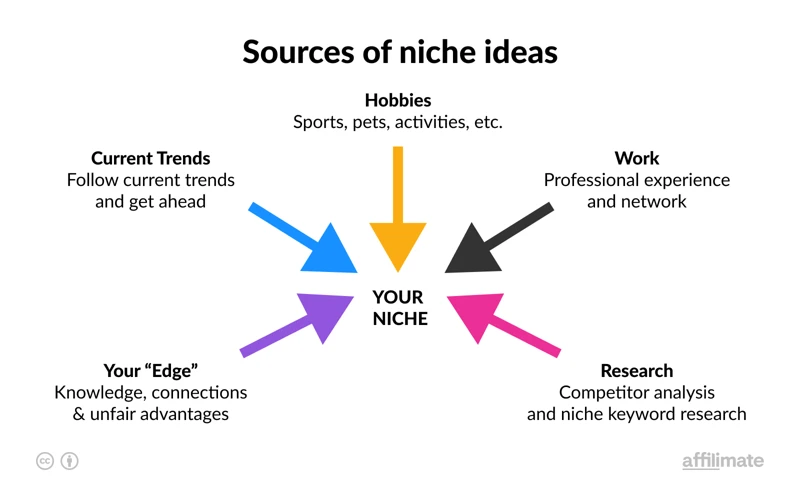
Creating a niche website or blog is an essential step in your journey of affiliate marketing on Amazon. A niche website or blog allows you to establish yourself as an authority in a specific area and attract a targeted audience. To begin, choose a niche that aligns with your interests and has a potential for profitability. Conduct thorough research to identify popular products within your chosen niche and assess the competition. Once you have selected your niche, it’s time to create your website or blog. Choose a domain name that reflects your niche and register it with a reputable domain registrar. Next, select a reliable web hosting provider and set up your website using a user-friendly content management system (CMS) such as WordPress. Customize your website’s design and layout to make it visually appealing and user-friendly. It’s important to optimize your website for search engines by including relevant keywords in your content and meta tags. Regularly publish high-quality, informative, and engaging content related to your niche to attract and retain your audience. Incorporate your affiliate links naturally within your content to promote relevant products. Remember to disclose your affiliate relationship with Amazon to maintain transparency with your audience. By creating a niche website or blog, you can establish yourself as an authority, attract targeted traffic, and increase your chances of generating affiliate sales on Amazon. So, start brainstorming your niche and get ready to build your online presence.
Optimizing Your Website for SEO
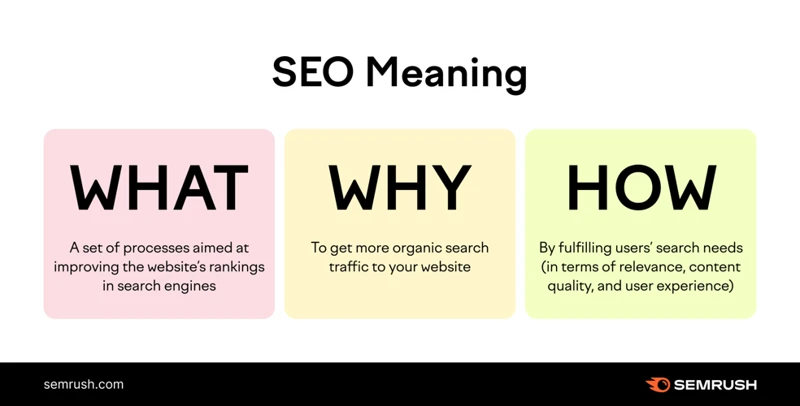
Optimizing your website for SEO (Search Engine Optimization) is crucial to ensure that your affiliate marketing efforts on Amazon are successful. SEO helps improve your website’s visibility on search engines like Google, increasing the chances of attracting organic traffic. One important aspect of SEO is keyword research, where you identify high-volume keywords related to the products you are promoting. By strategically placing these keywords in your website’s content, meta tags, and headings, you can improve your website’s ranking in search results. Additionally, on-page optimization involves optimizing your website’s structure, URL structure, and internal linking to make it more search engine friendly. Building high-quality backlinks from reputable websites can also boost your website’s authority and visibility. By implementing these SEO strategies, you can drive more targeted traffic to your website, increase your chances of earning commissions, and ultimately, maximize your affiliate marketing success on Amazon.
Keyword Research
Keyword research is a crucial step in optimizing your website for search engine optimization (SEO) and improving your chances of ranking higher in search engine results pages (SERPs). It involves finding the right keywords that are relevant to your niche and have a high search volume. There are various tools available to help you with keyword research, such as Google Keyword Planner, SEMrush, and Ahrefs. Start by brainstorming a list of keywords that are related to your niche and then use these tools to analyze the search volume and competition for each keyword. Look for keywords that have a high search volume but low competition, as this will give you a better chance of ranking higher in the SERPs. Additionally, consider long-tail keywords, which are longer and more specific phrases that people are likely to search for. These keywords usually have less competition and can help you target a more specific audience. Once you have identified your target keywords, incorporate them naturally into your website’s content, including your titles, headings, and meta tags. This will help search engines understand the relevance of your website to those keywords and improve your chances of ranking higher. Remember to avoid keyword stuffing, as this can negatively impact your SEO efforts. By conducting thorough keyword research and optimizing your website accordingly, you can increase your visibility in search engine results and attract more organic traffic to your affiliate links.
On-Page Optimization
On-Page Optimization plays a crucial role in improving the visibility and ranking of your affiliate website on search engines. It involves optimizing various elements on your website to make it more search engine friendly. Here are some key strategies for effective on-page optimization:
1. Keyword Research: Conducting thorough keyword research is essential to identify the relevant keywords and phrases that your target audience is searching for. Use keyword research tools to find high-volume, low-competition keywords that you can incorporate into your website’s content.
2. Title Tags: The title tag is an HTML element that specifies the title of a web page. It should be concise, descriptive, and include your target keyword. Including your brand name in the title tag can also help improve brand recognition.
3. Meta Descriptions: Meta descriptions are HTML attributes that provide a brief summary of the content on a web page. Optimize your meta descriptions by including relevant keywords and compelling descriptions that entice users to click on your website in the search results.
4. URL Structure: Create SEO-friendly URLs that are easy to read and understand. Include your target keyword in the URL and separate words with hyphens (-) for better readability.
5. Heading Tags: Use heading tags (H1, H2, H3, etc.) to structure your content and make it easier for search engines to understand. Include your target keyword in at least one heading tag.
6. Keyword Density: While it’s important to incorporate keywords in your content, avoid keyword stuffing. Aim for a natural keyword density and focus on creating high-quality, informative content that provides value to your readers.
7. Image Optimization: Optimize your images by using descriptive file names and including alt text that includes relevant keywords. This helps search engines understand the content of your images.
8. Internal Linking: Create internal links within your website to help search engines discover and index your content. This also helps users navigate your site easily.
By implementing these on-page optimization strategies, you can improve the visibility of your affiliate website on search engines, attract more organic traffic, and increase the chances of generating affiliate sales. Remember to regularly monitor and analyze your website’s performance using tools like Google Analytics to make necessary adjustments and improvements.
Link Building
Link building is a crucial aspect of affiliate marketing that can significantly impact the visibility and authority of your website. The goal of link building is to acquire high-quality backlinks from other websites to your own. These backlinks act as “votes of confidence” for search engines, signaling that your website is reputable and trustworthy. There are several strategies you can use for effective link building. One strategy is to reach out to relevant websites in your niche and request a link back to your website. This can be done by sending personalized emails to website owners or bloggers, highlighting the value your content provides and how it can benefit their audience. Another strategy is to create compelling content that naturally attracts backlinks. This could include creating in-depth guides, infographics, or conducting original research. When other websites find your content valuable, they are more likely to link back to it. Additionally, guest blogging on other websites is a great way to build links and establish yourself as an authority in your niche. By writing informative and engaging articles for other websites, you can include a link back to your own website in the author bio or within the content itself. Remember, it’s important to focus on quality rather than quantity when it comes to link building. One high-quality backlink from a reputable website can be more valuable than multiple low-quality backlinks. By consistently implementing effective link building strategies, you can improve your website’s visibility in search engine results pages and drive more targeted traffic to your affiliate links. To learn more about how to do affiliate marketing on other platforms, check out this article on how to do affiliate marketing on Twitter.
Creating High-Quality Content

Creating high-quality content is crucial for the success of your affiliate marketing efforts on Amazon. Your content should be informative, engaging, and valuable to your audience. One effective way to create high-quality content is by writing detailed and unbiased product reviews. These reviews should highlight the features, benefits, and drawbacks of the products you are promoting. By providing honest and well-researched information, you can establish yourself as a trusted authority in your niche and build credibility with your audience. Another type of content that performs well is product comparisons. This involves comparing similar products and highlighting their differences, helping your audience make an informed purchasing decision. Additionally, creating how-to guides can be beneficial as they provide step-by-step instructions on how to use a product or solve a problem. This type of content not only drives traffic to your website but also positions you as a helpful resource. Remember, the key to creating high-quality content is to focus on providing value to your audience and addressing their needs. By doing so, you can increase your chances of generating more sales and earning higher commissions.
Product Reviews
Product reviews are an essential aspect of successful affiliate marketing on Amazon. When consumers are considering making a purchase, they often turn to product reviews to gather more information and make an informed decision. As an affiliate marketer, writing detailed and unbiased product reviews can greatly increase your chances of earning commissions. Start by selecting products that are relevant to your niche and have a good demand in the market. Thoroughly research the product, highlighting its features, benefits, and potential drawbacks. Use html tags to emphasize key points and make the review more visually appealing. Include personal experiences and anecdotes to make the review more relatable and trustworthy. It’s important to be honest and transparent in your reviews, providing both the pros and cons of the product. This will establish credibility with your audience and build trust. Additionally, consider including relevant images, videos, or infographics to enhance the review and provide a visual representation of the product. Finally, don’t forget to include your affiliate links strategically throughout the review, making it easy for readers to make a purchase. By writing compelling and informative product reviews, you can attract more potential buyers and increase your chances of earning commissions. For more information on affiliate marketing, you can check out our article on how to do affiliate marketing on Shopify.
Product Comparisons
Product comparisons are a valuable strategy in affiliate marketing that can help drive conversions and increase your affiliate earnings. When you create product comparison content, you are providing your audience with a side-by-side analysis of two or more similar products, highlighting their features, benefits, and drawbacks. This type of content is highly effective because it helps potential buyers make informed purchasing decisions.
To create compelling product comparisons, start by selecting two or more products that are relevant to your niche and have high demand. Conduct thorough research and gather as much information as possible about each product, including specifications, customer reviews, and expert opinions.
Next, structure your comparison content in a clear and organized manner. You can use an HTML table to present the information in a visually appealing way, with columns representing each product and rows for the different features or criteria you’re comparing. Highlight the key features and benefits of each product using tags to make them stand out.
When writing the comparison, be objective and unbiased. Provide factual information and highlight the pros and cons of each product. This will help your audience make an informed decision based on their specific needs and preferences.
In addition to the written content, consider including images or videos of the products to enhance the visual appeal and provide a better understanding of their features.
Finally, don’t forget to include your affiliate links within the comparison content. When readers find the information valuable and are ready to make a purchase, they can easily click on your affiliate links to complete the transaction. This is where you earn your commission.
By creating informative and well-structured product comparisons, you can establish yourself as a trusted authority in your niche and increase your chances of generating sales through your affiliate marketing efforts. So, start researching, writing, and comparing products to boost your affiliate earnings today. If you don’t have a website yet, don’t worry! You can still learn how to do affiliate marketing without a website.
How-To Guides
How-To Guides are a valuable type of content that can help you engage your audience and drive traffic to your affiliate links. These guides provide step-by-step instructions on how to accomplish a specific task or achieve a particular goal. When creating How-To Guides for affiliate marketing on Amazon, you can focus on demonstrating how to use a product, solve a problem, or achieve a desired outcome. For example, if you’re promoting a kitchen gadget on Amazon, you could create a How-To Guide on “How to Prepare Delicious Meals with [Product Name].” In this guide, you can provide detailed instructions, tips, and recipes that showcase the versatility and benefits of the product. By offering valuable information and demonstrating the product’s usefulness, you can build trust with your audience and increase the chances of them making a purchase through your affiliate link. Remember to optimize your How-To Guides for SEO by using relevant keywords in the title, headings, and throughout the content. Additionally, consider including high-quality images, videos, or infographics to enhance the visual appeal and usefulness of your guide. By providing valuable and actionable information, How-To Guides can be a powerful tool in your affiliate marketing strategy, helping you attract and convert your target audience. If you’re interested in learning more about affiliate marketing without a website, check out our comprehensive guide on how to do affiliate marketing without a website.
Promoting Your Affiliate Links

Once you have created your niche website or blog and optimized it for SEO, the next step is to promote your affiliate links. One effective way to do this is through social media marketing. Utilize platforms like Facebook, Instagram, and Twitter to share engaging content related to the products you are promoting. Interact with your audience, answer their questions, and provide valuable information that encourages them to click on your affiliate links. Additionally, email marketing can be a powerful tool for promoting your affiliate links. Build an email list of interested subscribers and regularly send them updates, promotions, and recommendations. Remember to provide valuable content in your emails to build trust with your audience. Lastly, influencer marketing can also be a great way to promote your affiliate links. Collaborate with influencers in your niche who have a strong following and ask them to promote your products. This can significantly increase your reach and drive more traffic to your affiliate links. By utilizing these promotional strategies, you can effectively increase your chances of earning commissions through your affiliate marketing efforts.
Social Media Marketing
Social media marketing is a powerful strategy for promoting your affiliate links and reaching a wider audience. With billions of active users on platforms like Facebook, Instagram, Twitter, and Pinterest, social media provides a vast potential for driving traffic and generating sales. Here are some key steps to effectively use social media for affiliate marketing on Amazon:
1. Create Engaging Profiles: Set up professional and engaging profiles on relevant social media platforms. Use high-quality images, optimize your bio with keywords, and include your affiliate link in your profile.
2. Share Valuable Content: Regularly share valuable content related to your niche. This can include product reviews, tips and tricks, how-to guides, and engaging visuals. Make sure to include your affiliate link in relevant posts.
3. Build a Community: Engage with your audience by responding to comments, asking questions, and initiating conversations. Building a community of loyal followers can lead to increased trust and higher conversions.
4. Utilize Hashtags: Research and use relevant hashtags to increase the visibility of your posts. Hashtags can help you reach a wider audience and attract potential customers who are interested in your niche.
5. Run Contests and Giveaways: Organize contests or giveaways to incentivize engagement and increase your social media following. This can help you gain more visibility and attract potential customers to your affiliate links.
6. Collaborate with Influencers: Partnering with influencers in your niche can greatly expand your reach and credibility. Reach out to influencers and offer them incentives to promote your affiliate links to their followers.
7. Track and Analyze: Use social media analytics tools to track the performance of your posts and campaigns. Identify which strategies are working best for you and make adjustments accordingly.
Remember to always disclose your affiliate relationship and comply with the guidelines and policies of each social media platform. By implementing an effective social media marketing strategy, you can leverage the power of social media to drive traffic, increase conversions, and grow your affiliate marketing business on Amazon.
Email Marketing
Email marketing is a powerful strategy that can greatly boost your affiliate marketing efforts on Amazon. By building an email list of interested subscribers, you can stay connected with your audience and promote relevant products or offers directly to their inbox. Here are some key steps to effectively implement email marketing as part of your affiliate marketing strategy:
1. Build an Email List: Start by creating a compelling opt-in form on your website or blog where visitors can provide their email addresses in exchange for valuable content or exclusive offers. You can also leverage social media platforms to drive traffic to your opt-in form.
2. Provide Value: Once you have subscribers on your email list, it’s important to consistently provide value through informative and engaging content. This can include product recommendations, helpful tips, or exclusive discounts. The goal is to build trust and establish yourself as an authority in your niche.
3. Segment Your List: Not all subscribers will have the same interests or needs. Segmenting your email list based on factors like demographics, interests, or purchase history allows you to send targeted and personalized emails. This increases the likelihood of conversions and enhances the overall user experience.
4. Choose the Right Email Marketing Platform: There are many email marketing platforms available, such as Mailchimp, AWeber, or ConvertKit. Research and choose a platform that suits your needs and provides features like automation, analytics, and easy-to-use templates.
5. Craft Compelling Emails: Your emails should be attention-grabbing, concise, and persuasive. Use compelling subject lines, personalize the content, and include clear call-to-actions that encourage recipients to click on your affiliate links.
6. Compliance with Regulations: Ensure that you comply with email marketing regulations, such as obtaining consent from subscribers, providing an option to unsubscribe, and including your contact information in every email.
7. Track and Analyze: Track the performance of your email campaigns using analytics provided by your email marketing platform. Monitor metrics like open rates, click-through rates, and conversions to identify what’s working and what needs improvement.
Remember, building a quality email list takes time and effort. Focus on providing value and nurturing relationships with your subscribers to maximize the effectiveness of your email marketing campaigns.
Influencer Marketing
Influencer marketing has become a powerful strategy in the world of affiliate marketing on Amazon. Influencers are individuals who have a significant following on social media platforms, such as Instagram, YouTube, or TikTok. These influencers have built a loyal audience who trust their recommendations and opinions. As an affiliate marketer, partnering with influencers in your niche can help you reach a wider audience and increase your chances of driving sales. When working with influencers, it’s important to choose those who align with your brand and target audience. You can reach out to influencers directly or use influencer marketing platforms to find suitable partners. Once you’ve established a partnership, the influencer can promote your affiliate links to their followers through sponsored posts, product reviews, or shoutouts. To maximize the effectiveness of influencer marketing, it’s crucial to track the performance of your campaigns. You can use tracking tools and analytics to measure the click-through rates, conversions, and overall ROI generated by each influencer. By analyzing the data, you can identify which influencers are driving the most sales and make informed decisions on future collaborations. Remember, influencer marketing can be a highly effective way to promote your affiliate links and boost your earnings on Amazon. So, don’t underestimate the power of influencers in your affiliate marketing strategy.
Analyzing and Optimizing Your Affiliate Campaigns

Once you have set up your affiliate campaigns, it’s important to continuously analyze and optimize them to maximize your earnings. Tracking your conversions is crucial in understanding which campaigns are performing well and which ones need improvement. By using tracking tools and analytics, you can identify the sources of your conversions and make data-driven decisions to optimize your campaigns. Split testing is another powerful tool that allows you to test different variations of your affiliate links, landing pages, or ad copies to determine which ones yield better results. By constantly testing and tweaking your campaigns, you can improve your conversion rates and increase your overall profitability. Additionally, focusing on conversion rate optimization (CRO) can help you make small changes to your website or landing pages to improve the user experience and encourage more conversions. Whether it’s changing the call-to-action buttons, improving page load speed, or optimizing your website for mobile devices, every little improvement can make a big difference in your affiliate marketing success. So, don’t forget to regularly analyze, test, and optimize your affiliate campaigns to achieve the best possible results.
Tracking Your Conversions
Tracking your conversions is an essential aspect of running a successful affiliate marketing campaign. It allows you to measure the effectiveness of your marketing efforts and make data-driven decisions to optimize your strategy. There are several ways to track conversions, and it’s important to choose the method that best suits your needs.
One of the most common ways to track conversions is by using affiliate tracking software or platforms. These tools provide you with unique affiliate links that track clicks, sales, and other important metrics. They also offer detailed analytics and reporting features, allowing you to monitor the performance of your affiliate links in real-time. Some popular affiliate tracking software include Voluum, ClickMeter, and Post Affiliate Pro.
Another effective method of tracking conversions is by using Google Analytics. By setting up goals and tracking events, you can monitor the number of conversions generated from your affiliate links. Google Analytics provides valuable insights into your audience’s behavior, allowing you to identify which marketing channels and campaigns are driving the most conversions.
Additionally, you can use conversion pixels provided by affiliate networks or advertisers. These pixels are snippets of code that you place on your website, and they track when a conversion occurs. This method is particularly useful for tracking leads or sign-ups rather than direct purchases.
It’s important to regularly analyze and review your conversion data. Look for patterns and trends to identify what is working and what needs improvement. Pay attention to conversion rates, click-through rates, and average order values. By understanding your conversions, you can optimize your marketing efforts, refine your targeting, and maximize your earnings.
Remember, tracking your conversions is not just about monitoring your success, but also about learning and improving. Continuously test different strategies, tweak your campaigns, and monitor the impact on your conversion rates. With time and effort, you can refine your affiliate marketing approach and achieve greater success.
Split Testing
Split testing, also known as A/B testing, is a crucial technique in affiliate marketing that allows you to compare different variations of a webpage or marketing campaign to determine which one performs better. By conducting split tests, you can optimize your affiliate campaigns and improve your conversion rates. Here are the steps to effectively conduct split testing:
1. Identify the Element to Test: Start by identifying the specific element you want to test. This could be the headline, call-to-action button, layout, or any other element on your webpage or marketing materials.
2. Create Variations: Once you’ve identified the element to test, create different variations of it. For example, if you’re testing a headline, create multiple headlines with different wording or formatting.
3. Set Up Your Test: Use a split testing tool or software to set up your test. This will help you divide your traffic evenly between the different variations and track the performance of each variation.
4. Determine Your Goal: Clearly define the goal of your split test. It could be increasing click-through rates, improving conversion rates, or any other metric that aligns with your affiliate marketing objectives.
5. Run the Test: Start running the split test and gather data on the performance of each variation. Allow the test to run for a sufficient amount of time to gather statistically significant results.
6. Analyze the Results: Once you have collected enough data, analyze the results of your split test. Determine which variation performed better and contributed to higher conversions or engagement.
7. Implement the Winning Variation: Based on the results of your split test, implement the winning variation as the default option for your affiliate campaign. This will help you maximize your conversions and optimize your marketing efforts.
8. Repeat the Process: Split testing is an ongoing process. Continuously test and optimize different elements of your affiliate campaigns to ensure you’re always improving your results.
By consistently conducting split tests, you can make data-driven decisions to optimize your affiliate marketing campaigns and increase your chances of success. Remember to track and analyze the results of each split test to gain valuable insights and improve your overall performance.
Conversion Rate Optimization
Conversion rate optimization (CRO) is a crucial aspect of any successful affiliate marketing campaign. It involves optimizing your website or landing page to increase the percentage of visitors who take the desired action, such as making a purchase or filling out a lead form. Here are some strategies to help you improve your conversion rates:
1. Clear Call-to-Action: Make sure your call-to-action (CTA) buttons are clear, prominent, and compelling. Use action-oriented language and place them strategically on your website or landing page.
2. Streamlined Checkout Process: Simplify the checkout process to reduce friction and increase the likelihood of completing a purchase. Remove unnecessary form fields and provide multiple payment options for convenience.
3. Optimize Page Load Speed: A slow-loading website can deter visitors from staying and taking action. Optimize your website’s performance by minimizing file sizes, leveraging caching, and using a reliable hosting provider.
4. Mobile-Friendly Design: Ensure that your website is mobile-responsive and provides a seamless user experience across different devices. This is important as a significant portion of online traffic comes from mobile users.
5. Build Trust and Credibility: Establish trust with your audience by prominently displaying customer testimonials, security badges, and trust seals. Provide clear information about your return policy, shipping details, and customer support.
6. A/B Testing: Conduct A/B tests to experiment with different elements on your website, such as headlines, images, colors, and layouts. This allows you to identify what resonates best with your audience and optimize for higher conversions.
7. Personalization: Tailor your content and offers based on visitor behavior and preferences. Use tools like dynamic content and personalized recommendations to create a more personalized experience for your audience.
8. Monitor and Analyze: Track your conversion rates using analytics tools to identify areas of improvement. Pay attention to key metrics such as bounce rate, time on page, and conversion funnel performance.
By implementing these conversion rate optimization strategies, you can maximize the effectiveness of your affiliate marketing efforts and increase your earning potential. Remember, continuous testing, analysis, and improvement are key to achieving long-term success in affiliate marketing.
Scaling Up Your Affiliate Marketing Business
Once you have established a successful affiliate marketing business on Amazon, you may find yourself wanting to take it to the next level. Scaling up your affiliate marketing business involves expanding your reach and maximizing your profits. One way to do this is by outsourcing certain tasks. As your business grows, you may find it beneficial to delegate tasks such as content creation, social media management, or customer support to freelancers or virtual assistants. This allows you to focus on the strategic aspects of your business and frees up your time for other important tasks. Another strategy for scaling up is to expand to other affiliate programs. While Amazon is a great platform to start with, there are many other affiliate programs that offer different products and higher commission rates. By diversifying your affiliate partnerships, you can tap into new markets and potentially increase your earnings. Additionally, you can explore opportunities for collaborations with other affiliate marketers or influencers in your niche to reach a wider audience. Scaling up your affiliate marketing business requires careful planning and execution, but with the right strategies and mindset, you can take your business to new heights of success.
Outsourcing
Outsourcing is an essential strategy for scaling up your affiliate marketing business. As your business grows, you may find yourself overwhelmed with various tasks such as content creation, website maintenance, customer support, and more. Outsourcing allows you to delegate these tasks to skilled professionals, freeing up your time and energy to focus on the core aspects of your business. When it comes to outsourcing, there are several options available. You can hire freelancers from platforms like Upwork or Fiverr to handle specific tasks on a project basis. This can be useful for tasks such as graphic design, content writing, or website development. Another option is to hire a virtual assistant who can provide ongoing support and help with various administrative tasks. Virtual assistants can assist with managing emails, scheduling, data entry, and more. Additionally, you can consider partnering with an agency that specializes in affiliate marketing. These agencies have a team of experts who can handle multiple aspects of your business, including content creation, SEO, and campaign management. Outsourcing not only helps you save time but also allows you to tap into the expertise of professionals in their respective fields. By leveraging the skills and resources of others, you can scale up your affiliate marketing business more efficiently and effectively.
Expanding to Other Affiliate Programs
Expanding to other affiliate programs can be a smart move to diversify your income streams and maximize your earning potential. While the Amazon Affiliate Program is one of the most popular and lucrative programs out there, there are many other affiliate programs that you can explore. Here are a few steps to help you expand to other affiliate programs:
1. Research and Identify Suitable Programs: Start by researching different affiliate programs in your niche. Look for programs that offer products or services that are relevant to your audience and align with your niche website or blog. Consider factors like commission rates, cookie duration, and program reputation.
2. Join Multiple Programs: Once you have identified suitable programs, sign up and join them. Each program will have its own application process, so make sure to follow the instructions and provide all the necessary information. Keep track of your affiliate links and ensure they are properly integrated into your website or blog.
3. Diversify Your Promotions: With multiple affiliate programs, you have the opportunity to promote a wider range of products or services. This can help you cater to different segments of your audience and increase your chances of earning commissions. Create content that showcases the benefits and features of the products or services you are promoting and incorporate your affiliate links strategically.
4. Track and Analyze Performance: As you expand to other affiliate programs, it’s important to track and analyze the performance of each program. Monitor your conversion rates, earnings, and other key metrics to determine which programs are generating the most income. Use this data to optimize your promotional strategies and focus on the programs that are delivering the best results.
5. Build Relationships with Program Managers: Take the time to build relationships with the program managers of the affiliate programs you join. They can provide valuable insights, promotional materials, and even exclusive offers for your audience. Regularly communicate with them to stay updated on new product launches, promotions, and any changes to the program.
By expanding to other affiliate programs, you can increase your earning potential and diversify your income sources. Remember to choose programs that align with your niche and audience, track your performance, and build relationships with program managers. With the right strategies and a diverse portfolio of affiliate programs, you can take your affiliate marketing business to the next level.
Conclusion
In conclusion, affiliate marketing on Amazon is a lucrative and flexible online business opportunity that allows individuals to earn passive income by promoting products listed on the platform. By joining the Amazon Affiliate Program, you can leverage the wide range of products available on Amazon and earn a commission for every sale generated through your affiliate links. To succeed in affiliate marketing on Amazon, it’s important to choose the right products to promote, create a niche website or blog, optimize your website for SEO, and create high-quality content. Additionally, promoting your affiliate links through social media marketing, email marketing, and influencer marketing can help drive traffic and increase conversions. It’s also crucial to analyze and optimize your affiliate campaigns by tracking conversions, split testing, and optimizing your conversion rate. As your affiliate marketing business grows, you can scale up by outsourcing tasks and expanding to other affiliate programs. With dedication and strategic planning, affiliate marketing on Amazon can be a profitable venture that provides you with financial freedom and flexibility. So don’t hesitate to get started and embark on this exciting journey today!
Frequently Asked Questions
1. How much money can I make with affiliate marketing on Amazon?
The amount of money you can make with affiliate marketing on Amazon can vary greatly depending on several factors such as the products you promote, the amount of traffic you drive to your affiliate links, and the commission rates offered by Amazon. Some affiliate marketers make a few hundred dollars a month, while others earn thousands or even tens of thousands of dollars. It ultimately depends on your dedication, marketing strategies, and the niche you choose.
2. Do I need a website to do affiliate marketing on Amazon?
While having a website is not a requirement, it is highly recommended for a successful affiliate marketing business on Amazon. A website allows you to create valuable content, build an audience, and optimize your site for search engine rankings. It also provides a platform to showcase product reviews, comparisons, and other promotional materials.
3. How long does it take to start earning money with affiliate marketing on Amazon?
The time it takes to start earning money with affiliate marketing on Amazon varies from person to person. It depends on factors such as your marketing efforts, the quality of your content, and the amount of traffic you can generate. Some affiliate marketers start earning within a few weeks, while others may take several months to see substantial results. Patience, consistency, and continuous learning are key to success in affiliate marketing.
4. Can I promote any product on Amazon?
While Amazon offers a wide range of products, there are certain restrictions on what you can promote as an affiliate. Some products, such as illegal items, adult content, and certain electronics, are not eligible for affiliate promotion. It’s important to review Amazon’s affiliate program policies and guidelines to ensure compliance before choosing which products to promote.
5. How do I track my affiliate sales and earnings on Amazon?
Amazon provides a comprehensive dashboard called the Amazon Associates Central where you can track your affiliate sales, earnings, and performance. It provides detailed reports on clicks, conversions, and commission rates. You can also generate various tracking IDs to monitor the performance of different marketing campaigns or promotional strategies.
6. Can I use social media to promote my Amazon affiliate links?
Yes, you can use social media platforms such as Facebook, Instagram, Twitter, and Pinterest to promote your Amazon affiliate links. However, it’s important to comply with the policies and guidelines of each platform and disclose your affiliate relationship to your audience. Building a strong social media presence, engaging with your followers, and sharing relevant and valuable content are key to successful social media marketing for affiliate promotion.
7. How do I choose the right products to promote on Amazon?
Choosing the right products to promote on Amazon is crucial for your success as an affiliate marketer. Start by selecting a niche that you are passionate about or have knowledge in. Research popular and trending products within that niche, analyze their demand, competition, and commission rates. Look for products with positive reviews, high ratings, and a good conversion rate. Additionally, consider the target audience and their purchasing behavior to ensure that the products align with their needs and interests.
8. Can I do affiliate marketing on Amazon if I live outside the United States?
Yes, you can participate in the Amazon Affiliate Program regardless of your location. Amazon has separate affiliate programs for different countries, allowing you to promote products to audiences worldwide. Simply sign up for the specific country’s affiliate program that you wish to target and follow their guidelines and policies.
9. How can I optimize my website for better search engine rankings?
To optimize your website for better search engine rankings, start by conducting keyword research to identify relevant and high-volume keywords related to your niche. Incorporate these keywords naturally into your website’s content, meta tags, headings, and URLs. Focus on creating high-quality and engaging content that provides value to your audience. Improve your website’s loading speed, ensure mobile responsiveness, and optimize your website’s structure and navigation for better user experience. Additionally, build high-quality backlinks from reputable websites to improve your website’s authority and visibility in search engine results.
10. Can I use email marketing to promote my Amazon affiliate links?
Yes, email marketing can be an effective strategy to promote your Amazon affiliate links and engage with your audience. Build an email list by offering valuable content, incentives, or opt-in forms on your website. Segment your email list based on the interests and preferences of your subscribers. Create personalized and targeted email campaigns that highlight relevant products, provide exclusive offers or discounts, and include compelling calls-to-action. However, it’s essential to comply with anti-spam laws and obtain permission from your subscribers before sending promotional emails.







